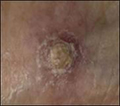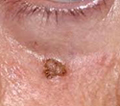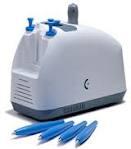
26850 Providence Parkway Suite #300, Novi, MI, 48374
Phone: 248.348.4200
Fax: 248.380.6457

Gavini Pediatric & ADHD Clinics26850 Providence Parkway, Suite 300, Novi, MI 48374 :: 248.348.4200www.ADHDclinic.com :: www.YourKidsDoctor.com |
|
|---|---|
|
Actinic Keratosis Actinic Keratosis on the face Actinic KeratosisWhat is Actinic KeratosisActinic keratosis is a premalignant condition of thick, scaly, or crusty patches of the skin. It is more common in fair-skinned people. It is associated with those who are frequently exposed to the sun, as it is usually accompanied by solar damage. Since some of these pre-cancers progress to squamous cell carcinoma, they should be treated. The scaly or crusty part of the bump is dry and rough. The growths start out as flat scaly areas, and later grow into a tough, wart-like area. An actinic keratosis site commonly ranges between 2 and 6 millimeters in size, and can be dark or light, tan, pink, red, a combination of all these, or have the same pigment as the surrounding skin. It may appear on any sun-exposed areas. |
|
Signs and SymptomsThe symptoms of a Actinic Keratosis may include:
|
|
Causes
|
|
TreatmentCryo-Pen System CyroPen: This is the state-of-the-art treatment modality that freezes the lesion to -130F. The rods in the Helium cooled devise come in various diameters to suit various lesion sizes. The Cryopen rod is applied to the lesion 10 seconds to 3 minutes, depending on the thickness and toughness of the lesion. The freezing will cause a blister which may last for 3 to 5 days before it scabs. The scab will fall off within 2 weeks. This skin area will remain light colored for a few months and would completely disappear, leaving no scars or discoloration. CryoPen advantages are:
|
|


